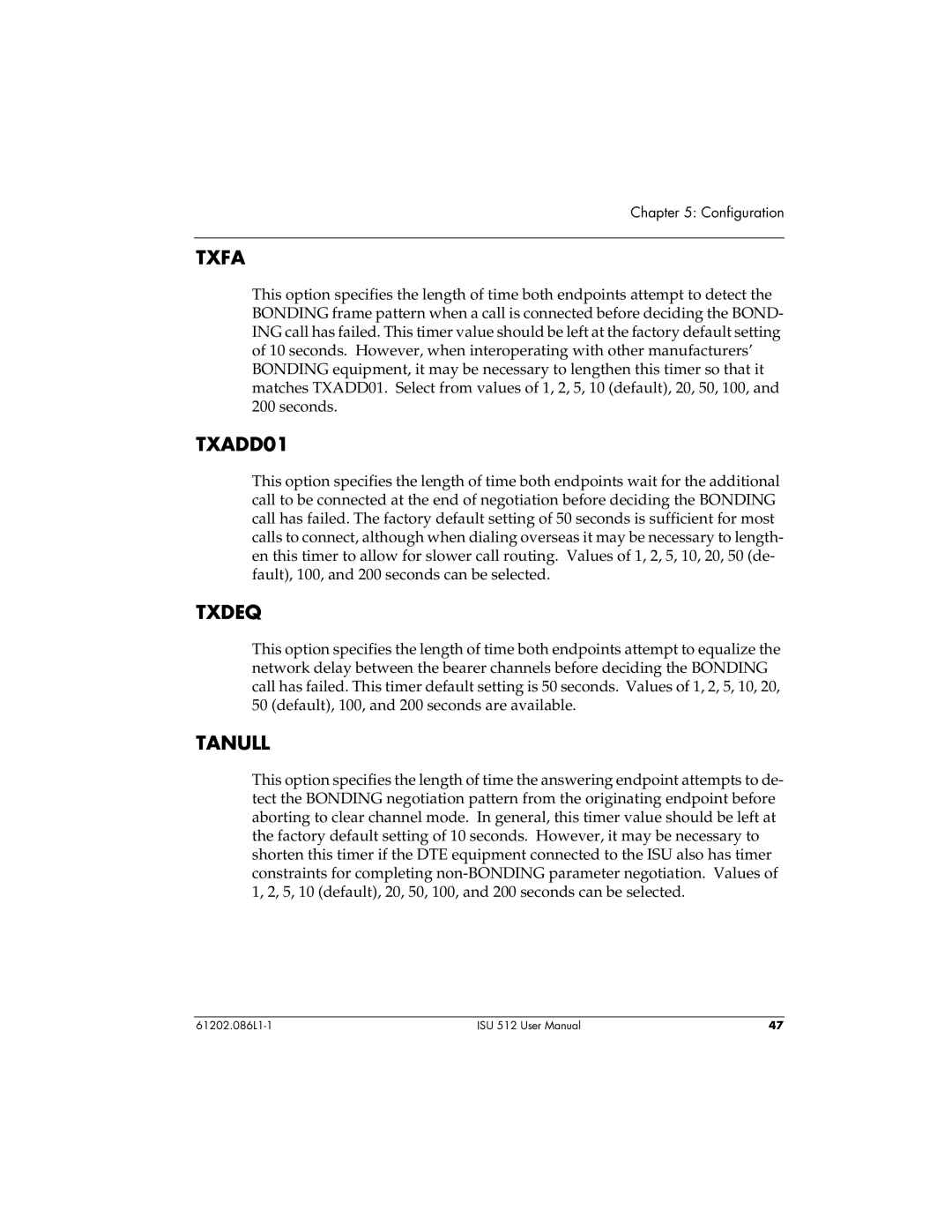
Chapter 5: Configuration
TXFA
This option specifies the length of time both endpoints attempt to detect the BONDING frame pattern when a call is connected before deciding the BOND- ING call has failed. This timer value should be left at the factory default setting of 10 seconds. However, when interoperating with other manufacturers’ BONDING equipment, it may be necessary to lengthen this timer so that it matches TXADD01. Select from values of 1, 2, 5, 10 (default), 20, 50, 100, and 200 seconds.
TXADD01
This option specifies the length of time both endpoints wait for the additional call to be connected at the end of negotiation before deciding the BONDING call has failed. The factory default setting of 50 seconds is sufficient for most calls to connect, although when dialing overseas it may be necessary to length- en this timer to allow for slower call routing. Values of 1, 2, 5, 10, 20, 50 (de- fault), 100, and 200 seconds can be selected.
TXDEQ
This option specifies the length of time both endpoints attempt to equalize the network delay between the bearer channels before deciding the BONDING call has failed. This timer default setting is 50 seconds. Values of 1, 2, 5, 10, 20, 50 (default), 100, and 200 seconds are available.
TANULL
This option specifies the length of time the answering endpoint attempts to de- tect the BONDING negotiation pattern from the originating endpoint before aborting to clear channel mode. In general, this timer value should be left at the factory default setting of 10 seconds. However, it may be necessary to shorten this timer if the DTE equipment connected to the ISU also has timer constraints for completing
ISU 512 User Manual | 47 |
